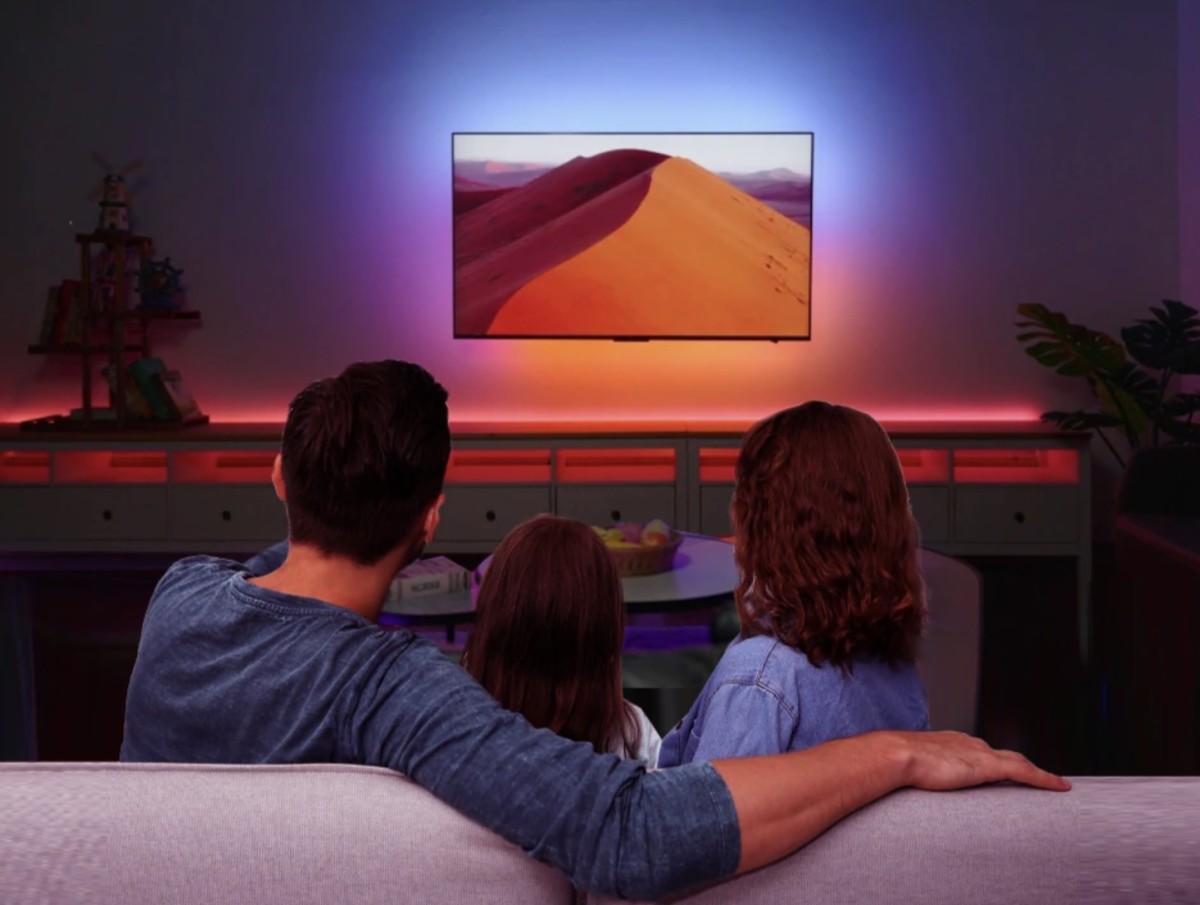What mood lighting means today is more about the ambience of a room than about creating a “look at me” point of view. So it’s no wonder that creating a form of mood lighting that can interact with a television set sounds appealing. After all, most agree that you shouldn’t watch TV in total darkness, so what happens if some kind of table lamp or nightlight ends up spotting the room with white light. Mood lighting for the TV should be less obtrusive, color-wise, but also more sensibly placed where the TV itself is. To fill in that gap, Lytmi makes the NEO-Pro HDMI 2.0 & TV LED Backlight Kit Sync Box for televisions. But that’s not all. The company also knows that many spend inordinate amounts of time in front of a monitor, so having mood lighting working here would get a thumbs up—so it’s called the Screen Strip Light for Windows PC. But first it’s all about TVs and the NEO-PRO Sync Box.
NEO-Pro HDMI 2.0 & TV LED Backlight Kit Sync Box
So the Sync Box is basically a technical black box designated to sync the TV’s imaging (i.e., display in action) with a background color—working with whatever is being displayed on the TV. Now that means movies obviously, but it also means video games. For this to work, the Sync Box has to have attached to it a color light source. For those who want to go whole hog and already have familiarity, that means going for the option of Lytmi white and color ambient bulbs or fixtures. But for those first out of the box, taking out of the box means using the NEO light strip. This is a strip that has 48 color enabled LEDs on it, each able to display a different color or brightness as compared to the others. Since up to 500-pixel dots can be processed, that translates to a high color reproduction (in sync mode). No calibration is needed, it’s just ready to go and control over the LEDs isn’t limited to just on/off, but can also flash or dim the intensity, even “dance” in sync with the imaging being displayed.
Setting It Up
Now setting up the NEO-Pro HDMI 2.0 & TV LED Backlight Kit Sync Box is far from difficult: As regards the box itself, you provide it with AC power and connect a HDMI device to it—such as an Xbox or PlayStation, a Blu-ray player, etc. (specs for the box are as follows: Wi-Fi 802.11 b/g/n/ 2.4 GHz, HDMI 2.0b with HDCP 2.2 Video resolution, up to 4K/60Hz). This obviously means you can’t just use it with the TV sans one of these devices. The strip itself gets placed around the TV—it has its own stickum for staying in place. So it’s not about the size of the TV but the placement of the strip that will define the visual appearance that occurs As it hits the wall behind/side of the TV. The strips, fyi, are encased in a silicon wrap that makes them not just easier to handle but safer to use and less likely to be damaged. Tying it all together is the free dedicated app for working the Sync Box’s settings and customizing the lighting effects. The app really makes it all work easily and there’s voice compatibility with Google Assistant and Alexa.
The Screen Strip Light for Windows PC
Now as to the Screen Strip Light for Windows PC, the most obvious part is that you get different sizes, depending on whether you’re using a single monitor or want to stretch the LED strip across multiple ones: 24” and less; 25 - 27”; 28 - 34”; 35 - 44”. The sticky strip is similar (the same actually) as that used for the Sync Box and is designed to work with Windows (sorry Mac folks). Setup is simple and fast—strips going over the top and sides, connecting to the power source cable, powered up and after a self-check syncing with the free software that has already been downloaded and installed. Sync modes, music modes and 12 effects modes (we kind of like fireworks ourselves). There’s also a physical control box with more limited control as well. The system works with multiple monitors as well as a single one and doesn’t care about the physical shape (i.e., 16:9, 4:3, etc.) of the monitor itself because it auto calibrates, detecting the color on the screen and transferring the necessary info to the LEDs on the strip. Obviously, you’ll need a set of strips for each monitor in use. And one thing that isn’t but should be noted is that having a backlight while staring at a monitor can be just as positive as having a backlight when watching a TV. If you’re interested in learning more about Ilytmi devices, you can read the technical specs and product listings. This content is accurate and true to the best of the author’s knowledge and is not meant to substitute for formal and individualized advice from a qualified professional.



